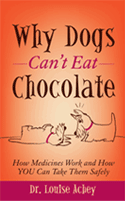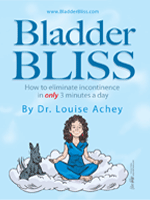Archive for March, 2015
March 30th, 2015. Filed Under:
consumer information,
medicines,
Vitamins.
Tags:
Alli®,
calcitriol,
calcium,
calcium supplement,
cholecalciferol,
cod liver oil,
fat-soluble vitamins,
gastric bypass surgery,
Vitamin D,
Vitamin EQ: My doctor gave me a prescription for Vitamin D that I’ve taken once a week for the past few months. Now my doctor’s office called and said that I didn’t need another refill, but to continue taking it as a supplement. How much should I take?
Vitamin D plays an important role in maintaining the strength of your muscles and bones. We absorb Vitamin D from the foods we eat and our skin can make it when we are outside on a sunny day, but the form of Vitamin D in our food, in supplements, and in our skin is not yet active. Before it can help us, our kidneys must change that form of Vitamin D into an active one.
As we age our skin makes less Vitamin D from the sun and our kidneys become less efficient in changing it to its active form. Over 50% of elderly Americans are thought to have Vitamin D deficiency, which has been linked to muscle weakness, falling, and an increased risk of breast, prostate, pancreatic, colon and ovarian cancers. Replenishing body stores of Vitamin D with supplementation has been shown to improve muscle strength and balance and decrease falls in elderly Americans by at least 20%.
New evidence published online in November 2014 in the journal Neurology links low levels of Vitamin D to the risk of developing dementia and Alzheimer disease. The Pro.V.A study followed 1927 generally healthy community dwelling elders, comparing blood levels of Vitamin D with their level of mental functioning. Those having a very low level of Vitamin D at the start of the study had a 122% higher risk of experiencing a decline in mental function over the 4.4 years of the study than those with adequate levels. Participants with low levels had a 55% increased risk of cognitive decline compared to the ones with adequate Vitamin D blood levels.
Unfortunately, it’s hard to get enough Vitamin D from just diet alone. The best source is fatty fish such as salmon, canned tuna and sardines, which have about 300 units of Vitamin D per 3.5 ounce serving. The next best source is fortified milk, with up to 100 units of Vitamin D. Milk was fortified in the United States beginning in the 1930s to combat rickets, a deficiency of Vitamin D in children that caused soft bones and deformed legs. One of the most memorable and concentrated sources of Vitamin D is cod liver oil, with 1300 units per tablespoon. (I’ll pass, thanks.)
Vitamin D is called the “Sunshine Vitamin” because our bodies generate it when our skin is exposed to UVB rays in direct sunlight. You are most likely to be deficient in Vitamin D if you are elderly, have dark skin, or spend very little time in the sun without wearing a sunscreen. Other causes of Vitamin D deficiency are linked to poor absorption of fat-soluble vitamins, such as having gastric bypass surgery, inflammatory bowel disease, or taking medicines like prednisone or the weight loss agent Alli®. Alli® is designed to block fat absorption in the gut, decreasing not just dietary fat absorption but also fat-soluble vitamins like Vitamins D and E.
Vitamin D comes in both prescription and non-prescription strengths. Three forms of Vitamin D are available: D2, called ergocalciferol, D3, called cholecalciferol, and calcitriol, which is the active form in our body. All 3 are available without a prescription from 400 up to 4000 units per capsule. The best one to use for maintaining Vitamin D levels is D3, which is cholecalciferol.
If you are considered Vitamin D deficient prescription strength Vitamin D is given: one 50,000 units capsule once a week is usually prescribed for 6-8 weeks, followed by a maintenance dose of 1000 to 2000 units daily. After you have finished the 50,000 once weekly regimen of Vitamin D, if your blood test has come back up to normal you should be able to maintain it with 2,000 units a day from either sun, diet or supplements.
Most women over 50 years old should take a calcium supplement with at least 800 units Vitamin D daily to help their body absorb and use the calcium to strengthen their bones. If you already take a calcium supplement haven’t at least 800 units of Vitamin D, then 1000 units of additional Vitamin D as Vitamin D3 daily should be adequate. Choose Vitamin D3 (cholecalciferol) for best results.
Leave a Comment
March 17th, 2015. Filed Under:
consumer information,
Drug interactions,
Medicine dangers,
medicines.
Tags:
American Association of Poison Control Centers,
cannabis,
e-cigarettes,
liquid nicotine,
nicotine,
Poison Control Center,
vapes,
Washington State Poison Center,
Yakima Valley Memorial HospitalOn a freezing cold night in February 1992, the clock above me reads 11:36 pm as the heavy metal reinforced door swooshes closed. The last pharmacy technician has headed home, leaving me alone in the basement-level pharmacy of Yakima Valley Memorial Hospital for the next 5 hours. But the quiet doesn’t last. An angry buzz erupts from the small cubicle of our tiny Poison Control Center – the insistent, distinctive sound of the Poison Control phone. Moving quickly to sit down in front of the dedicated microfiche reader, I pick up the receiver of the red phone on the desk to my right. “Hello, this is Poison Control. How can I help you?”
Every 8 seconds, someone in the United States calls a Poison Control center, nearly 11,000 calls a day. 90% of callers get the help they need without going to the ER or to the doctor. According to Alexander Garrard, PharmD., a Toxicologist and the Clinical Managing Director of the Washington Poison Center, “Every $1 spent on poison center services saves $13 by decreasing direct medical costs from avoiding visits to the ER, from shorter stays in the hospital, and fewer lost work days.”
My caller tonight was a distraught young man whose girlfriend grabbed a bottle of what she thought was cough syrup and took a big swig of it, with distressing results. Similar to over 90% of poisonings, this episode occurred at home, and with the resources of our Poison Control centers I was able to identify the offending substance quickly and start appropriate treatment, keeping her from needing additional and more expensive care at a hospital or urgent care center.
March 15-21st is the 53rd observance of National Poison Prevention Week, one of the longest continuously running health and safety programs in the United States. It’s also one of the most cost-effective: today’s 55 poison centers around the country save over $1.8 billion every year in reduced direct medical costs, lost work and productivity.
On that night in 1992 I worked for one of 4 hospitals in the state housing a poison center, along with St. Luke’s Hospital in Spokane, Mary Bridge Children’s Hospital in Tacoma, and Children’s Hospital in Seattle. Due to funding issues, later that year the state legislature voted to consolidate the 4 centers into one, and by 1995 the transition to the Washington Poison Center was complete. In 2005 a national toll-free hotline was established, connecting callers to the poison center nearest them and is still used today: 1-800-222-1222.
In 2014 the Washington Poison Center answered nearly 65,000 calls, an average of 174 calls per day, saving Washington State taxpayers, businesses and insurers over 10 million dollars. Cosmetics and personal care products were the leading cause of poisonings last year, with pain medicines the second most common exposure. Over 80% of poisonings were unintentional and more than 56% of poison exposures involved children younger than 6 years old.
Two disturbing trends seen by the Poison Control Center in our state and others nationwide are increased exposures in young children to concentrated nicotine from e-cigarettes and to cannabis (marijuana) products. During 2014, in Washington State 30% of nicotine exposures and 14% of cannabis exposures occurred in children under 6 years old. That’s an increase of over 1000% in calls just about e-cigarettes and liquid nicotine from 2012 to 2014.
Dr. Garrard describes one reason why: “E-cigarettes are not required to be child-resistant, which makes their concentrated nicotine contents easily accessible to busy fingers attracted by bright colors and appealing scents and flavors.” But taking apart the vaporizer or “vape” and putting it in their mouth is not the only way a child can ingest liquid nicotine. Refill bottles of candy flavored nicotine liquid are even more dangerous. States Dr. Garrard, “one 15ml bottle of liquid nicotine used to refill e-cigarettes contains 540mg of nicotine, the same amount found in 42 cigarettes.”
According to the American Association of Poison Control Centers, just one teaspoonful of liquid nicotine could be lethal to a child. Despite these dangers, there are no standards in place that address or require childproof packaging of either liquid nicotine or e-cigarettes. After the death of a 1 year-old in New York last December from accidentally ingesting liquid nicotine, there is current pending legislation in many states, including Washington.
More information about e-cigarettes and the “Top Ten” exposures of 2014 is at the Washington State Poison Center website, www.wapc.org, or at www.poisonprevention.org.
Leave a Comment
Q: I have exema on my hands. the medication (clobetasol) my Drs are gave me worked for a while. Now it just seems to keep it in check. I bought Bag Balm. I can see any directions on how to use it. Do I wear polyethaline gloves on the.. Seem that it might be messy without protection. How log do I leave it on? The only direction that came with it is for cows!!!! Thanks, –bob
Hello, Bob,
Eczema is a type of inflammatory reaction of the skin. Your skin reacts with redness, itching and burning, and when you scratch your skin, it reacts even more, which becomes a nasty cycle. The reason doctors use clobetasol is to calm down this cycle of reactivity in your skin. Skin with eczema reacts with redness and itching to a lot of things: to hot water, detergents, soaps, perfumes added to personal products like deodorants, creams and lotions, to scented and non-scented soaps and laundry detergent. One of the biggest culprits is antibacterial chemicals added to soaps and lotions. And that’s not all…your skin can even react to you feeling stressed.
Bag Balm® can help soothe and protect your skin because it “seals” it from exposure, BUT frankly, Bob, it’s not any better than any other plain ointment at doing that. Bag Balm® contains an anti-infective, which is not much help with eczema.
What ointment does is trap the moisture your skin gives off, instead of letting it evaporate. This keeps moisture in the top layer of your skin, easing dryness and protecting the skin from coming in contact with substances that irritate it. Increasing moisture in your top skin layer will improve how well your prescription clobetasol works because the moisture helps it penetrate better into your skin, and that helps it will work better for you.
Whichever ointment you use, I strongly recommend you use it to the affected area every night, with cotton gloves. Any cotton glove will work, even cotton socks on your hands. You shouldn’t have to resort to vinyl or polyethylene gloves, although if you want to see what kind of moisture your skin gives off all day long you can put them on and see how much “sweat” you get underneath the gloves. That “sweat” is the continuous moisture being lost through your skin. Putting on cream helps to trap some of that moisture in your skin but an ointment is more occlusive so it traps even more moisture.
I used to suffer from skin breakouts on my hands every winter, and I finally broke the cycle of having to use strong prescription steroid creams with the help of a dermatologist colleague. He showed me how to calm down the reactivity of my skin so I could wean myself off the prescription stuff.
He taught me to treat my skin GENTLY, like a fine wool sweater. To use only cool water to wash with, with NO scrubbing and NO harsh soaps. I learned to protect my skin by using creams during the day and ointment every night, and to apply my prescription steroid cream frequently as a THIN LAYER ONLY because only the layer touching your skin gets absorbed; you can add more but it will just waste it. Use your steroid cream more frequently at first, up to 4 times a day, and ALWAYS use ointment at night.You can put the ointment right over the THIN LAYER of cream to help it work better for you. Try not to wash your hands for at least 30 minutes after applying your prescription cream, because that way most of the medicine will get absorbed before you wash it off.
Let me know if this helps you, Bob. Good luck!
Leave a Comment
Q: There’s a sticker on my prescription bottle that says not to eat grapefruit or drink grapefruit juice. How long do I have to avoid grapefruit when taking my medicine?
– Grapefruit Lover
Some medications are best taken in a particular way: either with food, or taken before meals. Other medicines need to be refrigerated, or shaken well before they are poured out. The label on a prescription bottle doesn’t always have space to include this additional and vital advice, so your pharmacist will use an additional label called an accessory or an auxiliary label to call your attention to this important information.

Some medicines come with an accessory label that talks about grapefruit: “Avoid taking this medication with grapefruit or grapefruit juice”. But it doesn’t say exactly what would happen if you did. What if you forget and have grapefruit juice for breakfast when you take that pill? And how long should you should avoid grapefruit juice after taking it?
Why should you avoid mixing grapefruit juice with some medicines?
Grapefruit juice can change the way your body absorbs certain types of medicines. Most pills dissolve while in your stomach but that’s not where most of the action is when it comes to getting the medicine into your body. The lining of your small intestine is full of blood vessels and special molecules that move vitamins, minerals, nutrients and medicines into your bloodstream, and from there, throughout your body.
One type of special molecule found in the lining of your small intestine is an enzyme that can break apart medicines and change their shape, which then makes them inactive. This enzyme, called CYP3A4, will actually decrease the amount of active drug that you absorb into your body by taking some of it apart before it can be absorbed into your bloodstream. Several dozen medicines are affected by this enzyme, some more than others.
Grapefruit juice is important to this because it contains some natural compounds that will completely inactivate the CYP3A4 enzymes lining your small intestine. After this happens, all of the medicine in your tablet or capsule can now be absorbed into your body, instead of only part of the dose.
Drinking grapefruit juice has an effect similar to taking one and one-half doses every day of your medicine, instead of only one. This extra amount may not be noticeable with some medicines, but with others, especially heart medicines, it could cause you to experience serious side effects or even toxicity.
This “grapefruit effect” was discovered by accident. In 1991, researchers wanted to find out if drinking alcohol while taking a particular medicine would affect someone’s mental alertness or change the concentration of drug in the blood. To measure this, they designed a study in which each participant took the blood pressure medicine felodipine several times, sometimes with alcohol and sometimes without. Then they needed to disguise the samples so that the people in the study wouldn’t be tipped off on which one they were getting, which could affect the results.
The researchers asked themselves, “How can we mask the taste of the alcohol?” and chose grapefruit juice, giving each participant a glass of grapefruit juice with each dose of medicine, with half the samples containing alcohol and the other half just juice.

Then, something curious happened. All of the study participants had much lower blood pressures than the researchers expected to see and dramatically higher blood levels of the medicine they studied than expected from their doses, an average of 50% higher. Drinking alcohol didn’t turn out to have much effect on the blood level of felodipine, but drinking grapefruit juice with it sure did!
Further testing has shown that drinking only 7 ounces (less than a typical glass) of grapefruit juice completely inactivates the CYP3A4 enzymes in your small intestine for up to 3 days. If you happen to be taking felodipine, you’ll get 50% more medicine than the dose prescribed for you by your doctor until the enzymes recover.
This “grapefruit effect” is not the same in everyone. Some people have a smaller number of CYP3A4 enzymes in their small intestine, and some medicines are not as affected by it as others. And if you love other citrus fruit, don’t worry. Oranges, lemons and limes do NOT seem to have this effect on medications and are perfectly safe to have instead of grapefruit.
I’m sorry, but since the effect of one glass of grapefruit juice can last up to 3 days the only way to be completely safe if your medicine has a grapefruit interaction is to avoid grapefruit juice and grapefruit entirely.
Leave a Comment




